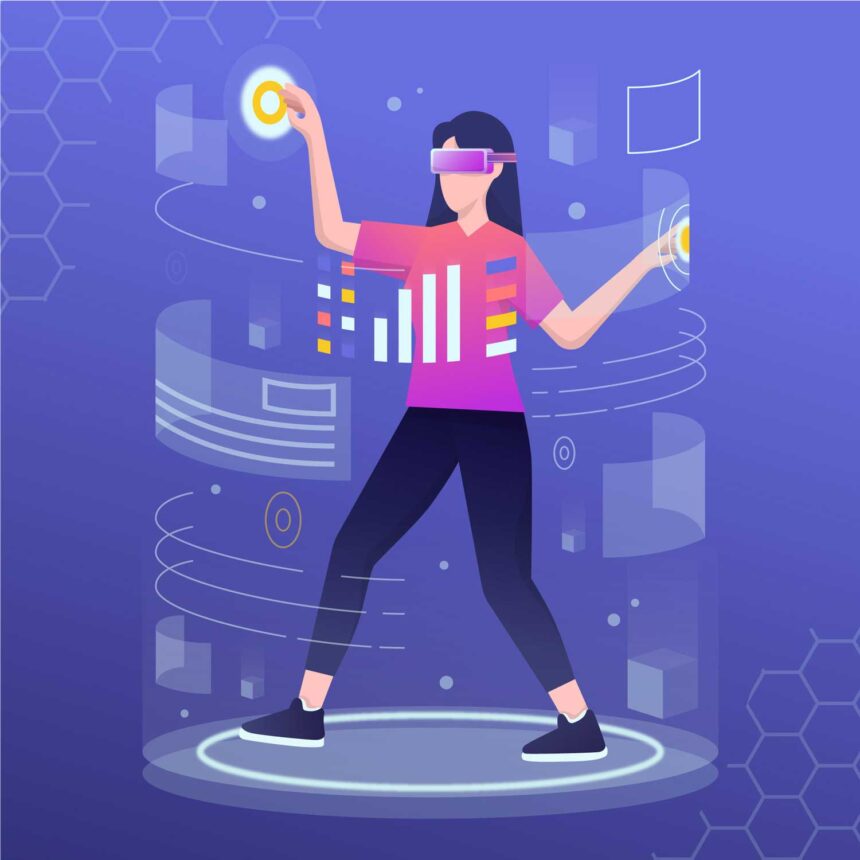It’s hard to deny technology’s significant influence on our personal lives and the global community as we look back on 2024. Technology is advancing at an unstoppable rate, changing whole sectors, how people work and communicate, and what can and cannot be done.
We explore the year’s most significant technological developments in this in-depth analysis, offering valuable perspectives on the transformational potential of innovation. Given that these trends influence the present and set the stage for the future, keeping up with them is essential to navigating our quickly changing digital environment.
Cybersecurity remained a paramount concern as digital threats evolved, prompting the development of more sophisticated defense mechanisms. The adoption of blockchain technology extended beyond cryptocurrencies, finding applications in supply chain management, voting systems, and more.
The sustainable tech movement also gained momentum, emphasizing the importance of eco-friendly innovations to address environmental challenges. As we explore these trends and their implications, we gain a deeper understanding of how technology continues to shape our world, offering opportunities and challenges as we move forward.
AI and Machine Learning Advancements
AI-powered applications continued to permeate various sectors, profoundly impacting industries and enhancing daily life in unprecedented ways. Fueled by AI, natural language processing technologies further blurred the lines between human and machine communication. Chatbots and virtual assistants became even more adept at understanding and responding to human queries, transforming customer service experiences, and streamlining information retrieval.
Additionally, AI-powered language translation tools reached new levels of accuracy, facilitating global communication and collaboration across language barriers. These advancements showcase the potential of AI to revolutionize our work and personal lives, making it an integral part of modern technology and when used alongside the best team management software, a powerful tool for productivity and efficiency.
The automotive industry also saw significant advancements, with AI and ML playing a pivotal role in developing autonomous vehicles. These technologies made cars more innovative, safer, and efficient, making advanced driver-assistance systems increasingly commonplace.
Machine learning algorithms enabled vehicles to recognize and respond to complex traffic scenarios, reducing accidents and making road travel more secure. Furthermore, AI-driven healthcare innovations transformed patient care by forecasting disease outbreaks and identifying medical disorders.
These discoveries demonstrated how AI and ML can revolutionize whole sectors of the economy, boost productivity, and eventually raise people’s standard of living everywhere.
The Rise of Metaverse and Virtual Reality
The metaverse, a collective virtual shared space, captured the imagination of both individuals and companies. Tech giants and startups invested heavily in building immersive digital environments where users could work, play, and socialize.
These metaverse spaces entertained virtual concerts, gaming, and art exhibitions and presented unique opportunities for remote work, collaboration, and education.
Virtual reality experiences also gained prominence, making VR headsets more accessible and affordable. Users could enter new worlds for gaming, exploration, or education, creating a previously unmatched sense of presence and immersion.
Educational institutions embraced VR as a powerful tool for immersive learning experiences, enabling students to visit historical landmarks, explore complex scientific concepts, and practice skills in realistic simulations.
Blockchain and Digital Currency Evolution
Decentralized finance continued to gain momentum, offering innovative financial solutions outside traditional banking systems. DeFi platforms leveraged intelligent contracts on blockchain networks to provide lending, borrowing, and trading services without intermediaries. These platforms democratized access to financial services, enabling individuals worldwide to participate in global finance.
Non-fungible tokens also made headlines in 2024, transcending the world of digital art and collectibles. NFTs have found applications in various industries, including music, gaming, and sports. Musicians released exclusive NFT albums, gamers traded NFT-powered in-game assets, and athletes sold digital memorabilia as NFTs.
This digital ownership and provenance tracking system offered creators new revenue streams and established unique digital ownership rights. Central bank digital currencies also gained traction as governments explored the benefits of digitalizing their national currencies.
CBDCs offered the potential for faster and more secure transactions, improved financial inclusion, and enhanced control over monetary policy.
Cybersecurity Challenges and Innovations
High-profile cyberattacks and data breaches reminded us of the persistent threats individuals, organizations, and governments face. Cybercriminals grew increasingly sophisticated, targeting critical infrastructure, healthcare systems, and supply chains. These incidents posed significant financial risks and compromised the privacy and security of individuals worldwide. The need for robust cybersecurity measures became more apparent than ever.
One notable advancement was the widespread adoption of zero-trust architecture. This approach, which assumes that threats may exist inside and outside the network, requires continuous verification of users and devices attempting to access resources.
Organizations fortified their defenses against unauthorized access and potential breaches by implementing zero-trust principles. Additionally, artificial intelligence and machine learning were pivotal in threat detection and response. These technologies enabled real-time analysis of vast amounts of data, identifying suspicious patterns and behaviors and allowing for swift action to mitigate cyber threats.
Sustainability and Tech: Green Innovations
The relationship between technology and sustainability gained prominence in 2024, underscoring the critical role that technological advancements play in tackling urgent environmental issues. As people looked for greener substitutes for fossil fuels, renewable energy technology kept developing and becoming increasingly popular.
Global adoption of solar and wind energy solutions rose as they became more cost-effective and efficient. Additionally, energy storage and grid management improvements increased the accessibility and dependability of renewable energy sources, increasing the likelihood of a sustainable energy future.
The tech industry also embraced sustainability, focusing on eco-friendly gadgets and sustainable practices. Companies began designing products with a reduced environmental footprint, using recyclable materials, and minimizing electronic waste.
Moreover, sustainable manufacturing processes and supply chain practices became a priority. Many organizations committed to carbon neutrality, implementing strategies to offset their emissions and reduce their overall environmental impact.
As we reflect on the technology trends of 2024, it’s evident that sustainability and tech innovations drive positive change and promise a greener and more sustainable future for our planet.









